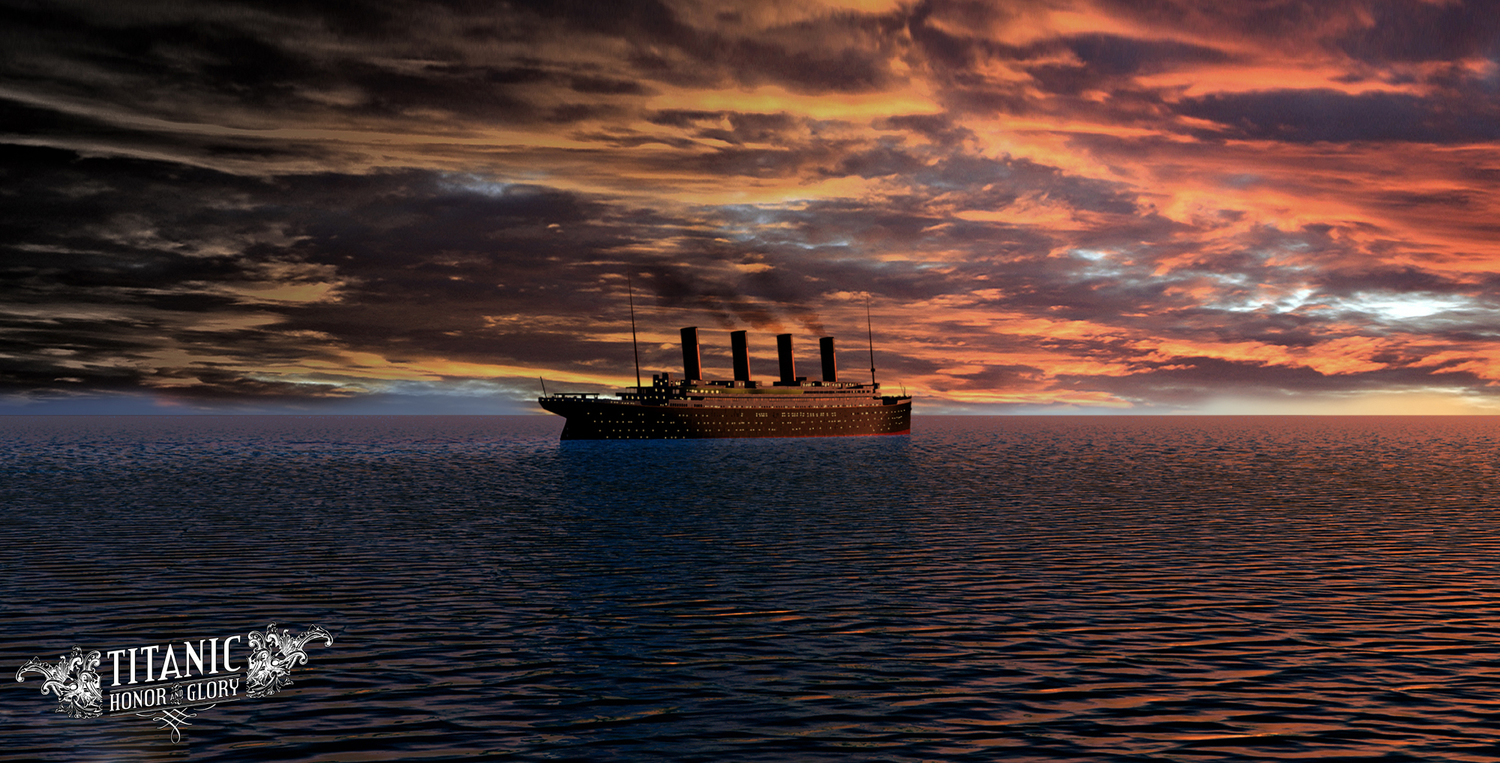
An eerily quiet new video recreates the Titanic's sinking in real time.
The video shows the entire 2 hours and 40 minutes of the slow-moving disaster, from the starboard-side collision with the iceberg to the ship's noisy breakup as it sinks beneath the waves. The new video was released by Titanic Honor & Glory, an organization that is using virtual reality to create an immersive video game set on the doomed ocean liner.
The new video opens with the RMS Titanic gliding peacefully across the seemingly placid, inky waters of the North Atlantic. The reassuring chug of the ocean liner's engines creates a steady background thrum, and a forest of stars glows in the night sky above. [Titanic Quiz: Fact or Fiction]
Then, a series of commands from the crew recreates the moment at 11:39 p.m. when they spot the iceberg that ultimately sank the Titanic. After sounding alarms, the crew tries to cut the engines.
"All stop," the captain calls.
As history shows, the commands came too late.
The ship hit the iceberg at 11:40 p.m, and though the crew sealed the watertight doors, by 11:49 p.m., more than 1 million gallons (3.7 million liters) of seawater had entered the ship. Over the next two hours, the video shows the engines quieting, steam from the boilers being released and the ship inexorably sinking into the waves. The video also shows water streaming into the elegantly furnished rooms of the opulent steamship.
Sign up for the Live Science daily newsletter now
Get the world’s most fascinating discoveries delivered straight to your inbox.
The footage also highlights the series of missed communications, engineering failures, and inadequate safety and rescue procedures that led to the tragedy. Ultimately, the ship sankwith more than 1,000 people still aboard. Two more hours had passed before the RMS Carpathia arrived to take the roughly 700 survivors to safety.
Indestructible ship
The RMS Titanic set sail on its maiden voyage from Southamptom, England, to New York City on April 10, 1912. At the time of its construction, the 882-foot-long (270 meters) behemoth was the largest moving object in the world, according to Titanic Honor & Glory. Many considered the ship "unsinkable," with Philip Franklin, vice president of the White Star shipping line going so far as to say, "There is no danger that Titanic will sink. The boat is unsinkable, and nothing but inconvenience will be suffered by the passengers." [Video: How Exactly Did the Titanic Sink? With James Cameron]
During its voyage, the Titanic was carrying some of the world's wealthiest people, including John Jacob Astor IV, ostensibly the richest man in the world, as well as throngs of poorer European immigrants coming to America. All told, 2,224 people were aboard at the time of its sinking. The wreck was ultimately recovered in 1985, about 12,500 feet (3,800 m) below the water's surface in the North Atlantic.
The disaster, which ultimately claimed roughly 1,500 lives, spurred a number of safety changes. After the disaster, ships were required to carry many more lifeboats (the Titanic had only enough aboard for half of its passengers). The closest ship missed the distress call from the Titanic because its operator was asleep, so ships are now required to have 24/7 radio watches. The sinking also spurred the passage of the International Convention for the Safety of Life at Sea, the world's first international maritime treaty to ensure minimum standards of safety at sea, though the outbreak of World War I prevented its enforcement for decades.
Follow Tia Ghose on Twitterand Google+. Follow Live Science @livescience, Facebook & Google+. Original article on Live Science.

Tia is the managing editor and was previously a senior writer for Live Science. Her work has appeared in Scientific American, Wired.com and other outlets. She holds a master's degree in bioengineering from the University of Washington, a graduate certificate in science writing from UC Santa Cruz and a bachelor's degree in mechanical engineering from the University of Texas at Austin. Tia was part of a team at the Milwaukee Journal Sentinel that published the Empty Cradles series on preterm births, which won multiple awards, including the 2012 Casey Medal for Meritorious Journalism.










